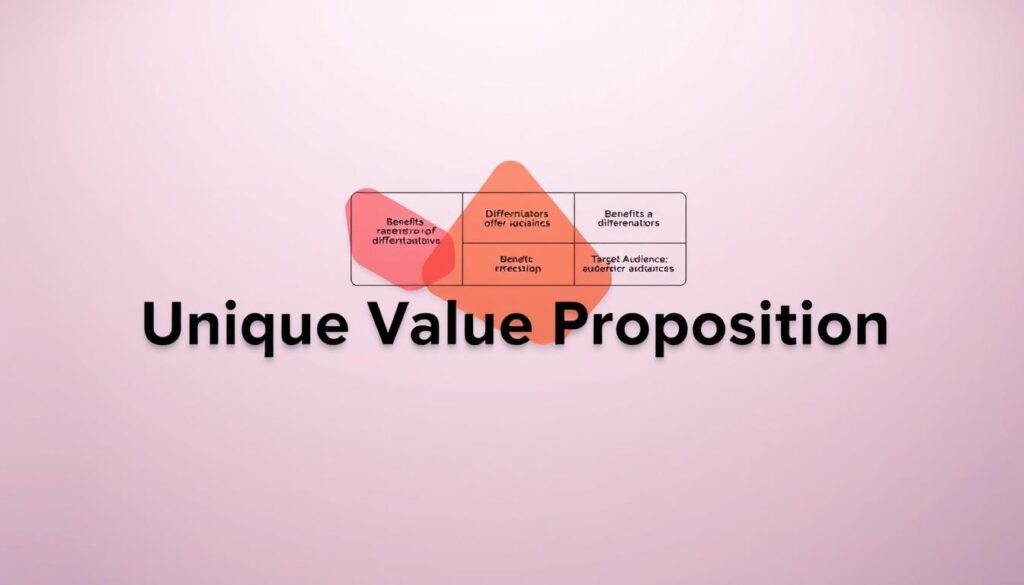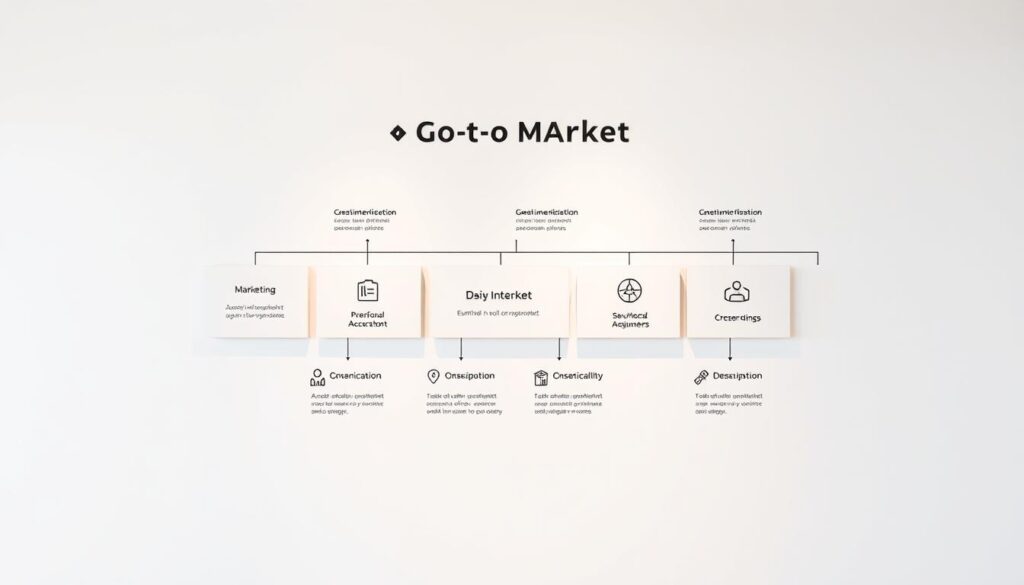Launching products in today’s competitive environment demands more than basic marketing tactics. A well-crafted go-to-market (GTM) approach acts as a roadmap, aligning audience targeting, competitive positioning, and measurable goals to maximize impact. Unlike general promotional plans, these strategies focus specifically on optimizing launches through data-driven decision-making.
Effective GTM frameworks start by identifying unique value propositions and customer pain points. They combine sales tactics, audience segmentation, and digital optimization to create cohesive campaigns. Businesses using structured methodologies often see 30-50% higher conversion rates than those relying on outdated practices.
Digital touchpoints serve as the backbone of modern GTM execution. Slow-loading pages or confusing navigation can derail even the most polished campaigns. This makes technical optimization and user experience improvements non-negotiable for organizations prioritizing long-term growth.
Key Takeaways
- GTM plans require detailed audience analysis and competitive benchmarking
- Product launches benefit from integrated sales and marketing alignment
- Website speed and usability directly influence campaign success rates
- Performance metrics should guide iterative strategy improvements
- Ongoing competitive analysis helps maintain market relevance
The Fundamentals of a Go-to-Market Strategy
In today’s dynamic business landscape, a systematic approach separates thriving launches from forgotten ones. Effective frameworks balance clear objectives with adaptable tactics, creating alignment across teams while addressing specific customer needs.
Defining the Purpose and Scope
Every gtm strategy begins by answering two questions: What problem does this solve? Who benefits most? Establishing purpose involves setting measurable goals tied to broader business outcomes, like increasing market share or improving customer retention.
Scope defines boundaries. It identifies which segments to target first and which competitors to benchmark against. For example, a SaaS company might focus on mid-sized enterprises struggling with workflow automation before expanding to other markets.
Key Components of a Robust GTM Plan
Six elements form the backbone of successful strategies:
| Component | Role | Impact |
|---|---|---|
| Objectives (OKRs) | Define success metrics | Aligns teams |
| Unique Value Proposition | Differentiates offerings | Boosts conversions |
| Target Audience Profiles | Guides messaging | Reduces wasted spend |
| KPI Framework | Tracks progress | Enables adjustments |
Businesses that map these components early see 40% faster revenue growth than those using fragmented plans. Regular reviews ensure strategies stay relevant as markets evolve.
Aligning Business Objectives with Market Opportunities
Businesses seeking sustainable growth must bridge the gap between internal goals and external realities. This alignment starts by quantifying opportunities through precise market sizing while identifying high-potential customer groups.

Understanding Market Sizing and Segmentation
Four critical metrics shape strategic decisions:
| Metric | Definition | Strategic Use |
|---|---|---|
| TAM | Total revenue potential if capturing 100% market share | Identifies long-term growth ceilings |
| SAM | Portion of TAM reachable with current capabilities | Guides resource allocation |
| SOM | Realistic short-term revenue targets | Sets achievable milestones |
| PAM | High-conversion accounts showing buying intent | Focuses sales efforts |
For example, a cybersecurity firm might calculate a $50B TAM globally but focus on a $12B SAM in North America. Their SOM could be $3B based on competitor presence and regional demand.
Effective segmentation digs deeper than basic demographics. It analyzes behavioral patterns like purchase triggers and usage frequency. Companies often discover 20-35% of their target market delivers 80% of profits through this process.
Timing plays a crucial role. Entering saturated markets requires different tactics than pioneering emerging ones. Regular analysis of regulatory changes and tech adoption rates helps businesses adapt strategies before competitors react.
Enhancing go to market website performance: Metrics and Measurements
Strategic teams transform raw data into growth opportunities by tracking the right numbers. Effective measurement frameworks bridge execution gaps, revealing what drives sustainable outcomes versus temporary wins.
Tracking Key Performance Indicators (KPIs)
Prioritize metrics that answer critical questions: Are acquisition costs sustainable? Do users find value quickly? Six indicators provide clarity:
| Metric | Purpose | Industry Standard |
|---|---|---|
| CAC | Cost to gain one customer | $702 (SaaS average) |
| Activation Rate | % completing key onboarding steps | 30-40% target |
| LTV:CAC Ratio | Profitability gauge | 3:1 = Healthy |
| Churn Rate | Annual customer loss | <5% ideal |
Evaluating Customer Acquisition and Retention
High-growth companies monitor leading indicators like demo bookings alongside lagging metrics such as MRR. When activation rates climb 20%, teams often see 35% faster expansion.
Retention analysis proves equally vital. A 10% churn reduction can boost annual revenue by 15-25% in subscription models. Combining NPS feedback with support ticket trends helps preempt cancellations.
Crafting a Unique Value Proposition and Product Positioning
In crowded industries, standing out demands more than just features—it requires clarity in why customers should choose you. A compelling value proposition acts as your strategic lighthouse, guiding messaging while addressing specific buyer priorities competitors overlook.

Identifying Your Competitive Edge
Start by mapping customer frustrations competitors fail to solve. For example, a SaaS company might discover clients value automated reporting over basic analytics—a gap competitors ignore. This insight becomes the foundation for differentiation.
Effective positioning connects product capabilities to measurable outcomes. Instead of listing technical specs, explain how features reduce onboarding time by 40% or cut operational costs. Use language matching your audience’s daily challenges—terms like “streamline workflows” resonate more than generic “innovative solutions.”
Analyze competitor marketing materials and customer reviews. Look for recurring complaints about slow support or missing integrations. These pain points reveal opportunities to emphasize strengths competitors lack, like 24/7 live chat or pre-built API connections.
Brand consistency amplifies impact. Ensure sales teams, ads, and support docs all highlight the same core benefits. Companies maintaining unified messaging see 3x higher recall rates than those using fragmented narratives.
Building a Cohesive Marketing and Sales Plan without Silos
Breaking down barriers between departments accelerates growth. A unified sales marketing strategy bridges gaps that often sabotage customer journeys. ZoomInfo’s survey of 450 leaders reveals 48% of sales teams see misalignment as critical—yet only 30% of marketing teams agree.
Integrating Marketing and Sales Initiatives
Shared goals replace fragmented efforts. High-performing organizations use three tactics:
- Joint quarterly planning sessions with cross-functional teams
- Unified dashboards tracking lead-to-revenue metrics
- Weekly syncs to adjust campaigns based on pipeline feedback
This alignment reduces wasted resources. Companies using integrated plans see 27% faster deal closures than siloed teams.
Establishing Clear Messaging and Distribution Channels
Consistent communication requires more than style guides. Successful teams map messaging to buying stages:
| Stage | Marketing Focus | Sales Focus |
|---|---|---|
| Awareness | Educational content | Lead qualification |
| Consideration | Case studies | Custom demos |
| Decision | ROI calculators | Contract negotiation |
Distribution channels follow customer preferences. B2B buyers often prefer email nurtures early, shifting to video calls during evaluations. Regular audits ensure content reaches the right audiences through optimal platforms.
Feedback loops close the alignment gap. When marketing shares campaign data with sales teams monthly, conversion rates improve by 19% on average. This collaboration turns separate functions into a revenue engine.
Leveraging Data-Driven Insights for Strategic Decision Making
Modern enterprises thrive on informed choices, not gut feelings. Only 50% of GTM leaders trust their customer data quality, while 25% question if real-time updates truly reflect current conditions. This gap highlights the need for reliable analytics frameworks that turn raw numbers into actionable plans.
Utilizing Real-Time Analytics
Instant data access lets teams spot trends as they emerge. For example, a sudden drop in campaign engagement could signal shifting buyer priorities. Yet, many organizations struggle with outdated systems—one in four leaders doubt their “real-time” tools actually refresh promptly.
GTM Intelligence platforms solve this by merging firmographic details, technographic patterns, and AI analysis. These systems identify high-intent accounts faster than manual methods, giving businesses a first-mover advantage in competitive markets.
Interpreting GTM Metrics Effectively
Not all numbers hold equal weight. Leading indicators like demo requests predict pipeline health, while lagging metrics such as churn rate reveal long-term weaknesses. The key lies in connecting dots between data points—like how a 15% CAC increase might correlate with lower customer lifetime value.
Teams using integrated dashboards spot these patterns 40% faster than those relying on scattered reports. Clear visualizations simplify complex relationships, turning overwhelming spreadsheets into strategic roadmaps.
Harnessing Multi-Channel Outreach and Social Media Strategies
Successful digital strategies thrive when organic authenticity meets paid precision. Companies blending these approaches see 45% higher engagement than those relying on single-channel tactics. The key lies in aligning messaging while respecting each platform’s unique strengths.
Balancing Organic and Paid Channels
Organic efforts build trust through valuable content and community interaction. Paid campaigns accelerate visibility for time-sensitive offers. A balanced mix often delivers superior ROI:
| Channel Type | Primary Role | Key Metric |
|---|---|---|
| Organic Social | Brand authority | Engagement rate |
| Paid Ads | Lead generation | Cost per click |
| SEO Content | Long-term visibility | Click-through rate |
| Email Marketing | Customer retention | Open rate |
Top performers allocate 60-70% of budgets to proven channels while testing new platforms with remaining funds. This approach maintains stability while exploring growth opportunities.
Engaging Your Target Audience on Social Platforms
Platform-specific content drives meaningful connections. Instagram users expect visual storytelling, while LinkedIn audiences prefer data-driven insights. One survey found:
“Brands using platform-native content formats see 3x higher share rates than those repurposing generic posts.”
Three engagement boosters:
- Interactive polls/stories for real-time feedback
- User-generated content campaigns
- Algorithm-friendly posting schedules
Businesses combining these tactics with targeted website traffic strategies often achieve 25% higher conversion rates. Regular A/B testing helps refine approaches as audience preferences evolve.
Overcoming Challenges in the Go-to-Market Journey
Navigating the go-to-market landscape requires anticipating hurdles before they derail progress. Common missteps include rushing audience analysis or skipping competitive benchmarking—errors that cost teams time and momentum. GTM strategy success hinges on balancing speed with precision.
Rushing audience research often leads to misaligned campaigns. Teams that dedicate time to validate assumptions through surveys or pilot programs see 28% faster adoption rates. Another pitfall? Treating strategy as static. Markets shift monthly—agile teams review metrics biweekly to adjust tactics.
Resource allocation challenges plague many businesses. Prioritizing high-impact activities like customer journey mapping over vanity metrics creates sustainable growth. Strategic alignment across departments prevents conflicting priorities from diluting efforts.
The path forward demands adaptability. Learn from early-stage friction points rather than viewing them as failures. Teams embracing iterative improvements build resilient frameworks that convert challenges into competitive advantages over time.
FAQ
How does a go-to-market strategy differ from a general marketing plan?
A GTM strategy focuses specifically on launching products/services to defined audiences, combining market research, sales alignment, and targeted campaigns. Traditional marketing plans often lack this hyper-focused coordination between product positioning, pricing, and customer journey mapping.
What metrics matter most for measuring go-to-market success?
Key indicators include conversion rates, customer acquisition cost (CAC), lead-to-opportunity ratios, and retention rates. Brands like HubSpot track product adoption velocity and feature usage patterns to gauge long-term viability.
Can small businesses benefit from formal GTM strategies?
Absolutely. Startups like Canva used lean GTM frameworks to validate demand before scaling. The strategy scales to any business size but requires adapting components like channel selection and budget allocation to available resources.
How do you create messaging that resonates across buyer personas?
Conduct voice-of-customer research through surveys or interviews. Tools like Gong.io analyze sales calls to identify recurring pain points. Segment messaging by role (e.g., IT vs. C-suite) while maintaining consistent core value propositions.
What’s the biggest mistake companies make with distribution channels?
Overinvesting in trendy platforms without audience validation. For example, TikTok drives 18-24 year-olds but fails for enterprise SaaS. Always match channels to where decision-makers actively seek solutions – LinkedIn for B2B, Instagram for DTC.
How often should GTM strategies be updated?
Review quarterly with minor tweaks, but major pivots require market shifts. Adobe’s shift to SaaS required overhauling pricing and partner programs – a response to industry-wide subscription model adoption.
Why do sales and marketing teams often misalign in GTM execution?
Siloed goals create friction. Marketing might prioritize lead volume while sales needs qualified opportunities. Shared KPIs like pipeline velocity and account-based marketing targets bridge this gap, as seen in Salesforce’s cross-functional pods.
What role does competitive analysis play in product positioning?
It identifies whitespace opportunities. Slack dominated by focusing on user experience despite existing chat tools. Regular SWOT analyses prevent me-too positioning and help articulate unique differentiators during sales conversations.
How do you balance organic vs paid acquisition in early-stage GTM?
Start with organic to validate messaging, then scale paid efforts. Grammarly grew through viral sharing before investing in targeted ads. Allocate 70% of budget to proven channels and 30% to experimental platforms during initial launches.
What’s the most overlooked component of customer retention strategies?
Onboarding experience. Companies like Dropbox increased retention by 15% through interactive product tours. Post-purchase engagement prevents churn and turns users into advocates who fuel referral pipelines.



